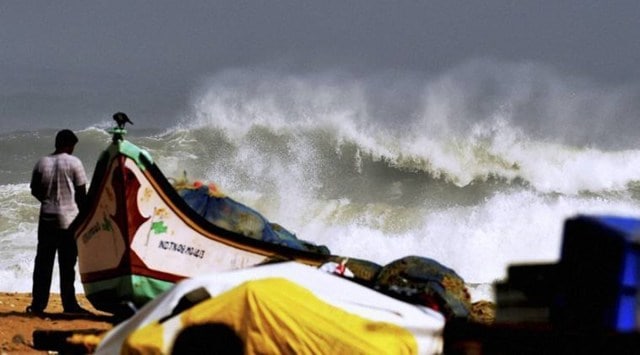
Every year, as a cyclone approaches a region, people become curious about the name given to the storm and the reasons behind it.
Cyclone & is a storm named by Sri Lanka, meaning “wrath” in Sinhalese, and it formed in the Bay of Bengal on Sunday morning, heading towards the east coast. This raises the question once again about how and why storms are named.
According to the World Meteorological Organization (WMO), there can be multiple cyclones in a particular area or globally, and these systems can last for a week or more. Therefore, each tropical storm is given a name to avoid confusion and facilitate disaster risk awareness, management, and mitigation.
Short, easy-to-pronounce names are helpful in quickly and effectively disseminating detailed storm information among numerous stations, coastal bases, and ships at sea. This method is less prone to errors compared to the older latitude-longitude identification methods.
Since 1953, Atlantic tropical storms have been named from lists prepared by the National Hurricane Center in the US. Initially, storms were named arbitrarily, and from the mid-1900s, feminine names were used. Later, meteorologists decided to name storms from a list for a more organized and efficient system, as stated by the WMO.
There are six Regional Specialized Meteorological Centers (RSMCs) worldwide and five regional Tropical Cyclone Warning Centers responsible for issuing advisories and naming cyclonic storms. The India Meteorological Department (IMD) is one of the RSMCs and is responsible for naming cyclones that form over the northern Indian Ocean when they reach a sustained surface wind speed of 62 km/h or more.
The naming of cyclones in the Bay of Bengal and Arabian Sea began in September 2004, with the IMD providing advisories to 13 countries across the North Indian Ocean.
The list of names is organized alphabetically by countries and is neutral to gender, politics, religious beliefs, and cultures. Once a name is used, it will not be repeated, and it should not be offensive to any member country or group of people. In 2020, a new list was released with 169 names, including 13 names from 13 countries.
Some names that have been used from India include Gati (speed), Megh (cloud), and Akash (sky). Other names from Bangladesh and Pakistan have also been used. The upcoming cyclone after Asani will be called Sitrang, a name given by Thailand.
Future names will include Ghurni, Probaho, Jhar, and Murasu from India, Biparjoy from Bangladesh, Asif from Saudi Arabia, Diksam from Yemen, and Toofan from Iran, and Shakhti from Sri Lanka.






